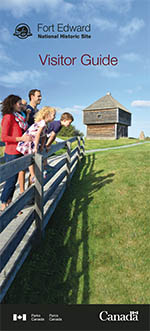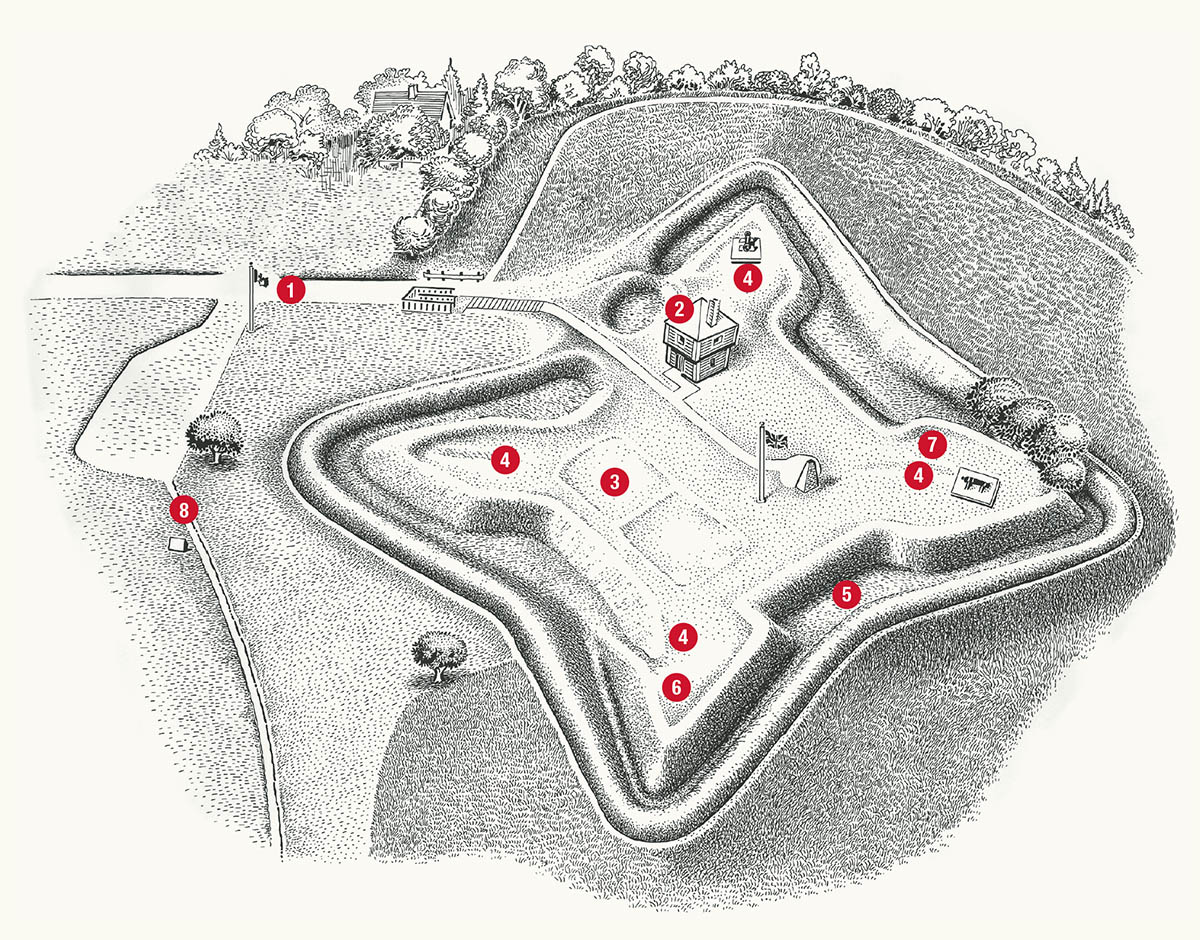
Visitor Guide
Fort Edward National Historic Site
Welcome to Fort Edward National Historic Site.

Fort Edward National Historic Site Visitor Guide
Welcome
Take some time to enjoy the view. This site is at the heart of routes of communication and travel in the region.
Long important to the Mi’kmaq, it became a site of Acadian settlement before the British built this fortification.
Walk the remnants of the earthen defensive works still visible, and explore Canada’s oldest surviving blockhouse.
Fort Edward was constructed in 1750 as part of a chain of fortifications supporting the new British base at Halifax, established in 1749. This strategic position at the junction of the St. Croix and Avon Rivers, provided the British access to the Bay of Fundy shore.
For several years after the establishment of Fort Edward, British control of Nova Scotia remained precarious. British settlements were small and scattered; the Mi’kmaq lived and travelled freely in most of the region and the Acadians cultivated their prosperous farms. Fort Edward was built to assert British control in this region, playing a role in the struggle for predominance in North America between 1750 and 1812.
In 1755, it served as a base of operations for the deportation of approximately 1200 Acadians from the Piziquid area who refused to swear an unconditional oath of allegiance that could require them to take up arms against the French.
A garrison remained at Fort Edward until 1850. Later it saw service during the American Revolution (1775-1783) and the War of 1812, providing security for the Windsor area and the route to Halifax.
In 1917, during the First World War, it became a base of training operations for the 38th, 39th, 40th, and 42nd Battalions of the Royal Fusiliers known collectively as the Jewish Legion.
Make the most of your visit
Plan to spend at least 45 minutes discovering the site. Wander through the blockhouse, which includes unique historic graffiti left by soldiers, and exhibits highlighting Fort Edward’s history.
Map
Use the map to try to find the former locations of other buildings in the fort, including barracks, powder magazines and storehouses. Now only the blockhouse remains.

Legend
1. Main entrance
2. Blockhouse
3. Site of soldiers' barracks
4. Bastions
5. Ramparts and ditch
6. Site of magazine
7. Site of storehouse
8. Trail
More information
Parks Canada
Fort Edward is part of the Parks Canada system of special places protecting and presenting Canada’s cultural and natural heritage for this and future generations.
While in the area, watch for the beaver symbol on highway signs. It will lead you to nearby Grand-Pré National Historic Site.
- Date modified :